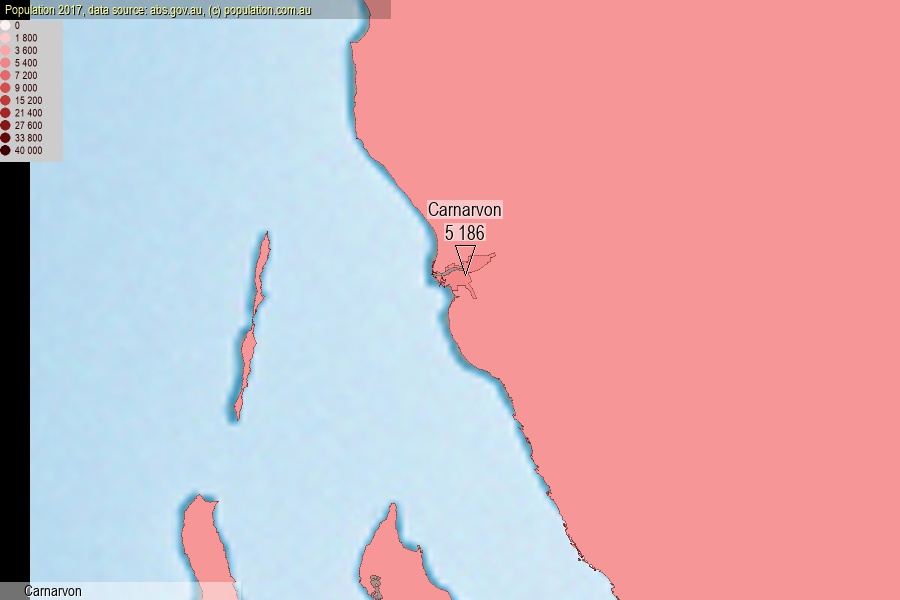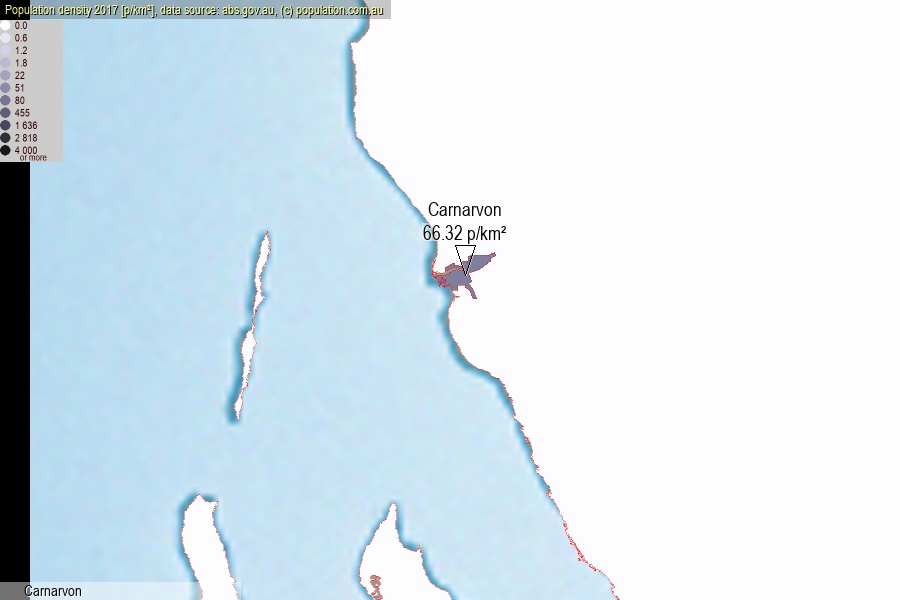 population.com.au
population.com.auLast official estimated population of Carnarvon (as Statistical Area Level 2) was 5 186 people (on 2017-06-30)[2]. This was 0.02% of total Australian population and 0.2% of WA population. Area of Carnarvon is 78.20 km², in this year population density was 66.32 p/km² . If population growth rate would be same as in period 2016-2017 (-2.83%/yr), Carnarvon population in 2025 would be 4 122. [0]



Click to enlarge. Carnarvon is located in the center of the images.
Population [people], population density [p./km²] and population change [%/year] [2]
View borders » (new window) [4]
[2001-2002] -0.61 %/Yr.
[2002-2003] -1.58 %/Yr.
[2003-2004] -3.08 %/Yr.
[2004-2005] -2.67 %/Yr.
[2005-2006] -1.51 %/Yr.
[2006-2007] -1.45 %/Yr.
[2007-2008] -0.39 %/Yr.
[2008-2009] +0.05 %/Yr.
[2009-2010] +0.32 %/Yr.
[2010-2011] +0.84 %/Yr.
[2011-2012] -0.23 %/Yr.
[2012-2013] -0.23 %/Yr.
[2013-2014] -1.16 %/Yr.
[2014-2015] -1.57 %/Yr.
[2015-2016] -2.04 %/Yr.
[2016-2017] -2.83 %/Yr.
[0] Calculated with linear interpolation from officially estimated population
[1] Read more about SA2 and Australian Statistical Geography Standard (ASGS) on abs.gov.au
[2] Population data from Australian Bureau of Statistics (Population and density: 2017; change: 2016-2017)
[3] Digital Boundaries: Australian Statistical Geography Standard (ASGS) 2016.
[4] Border coordinates are simplifyed using Ramer-Douglas-Peucker algorithm.